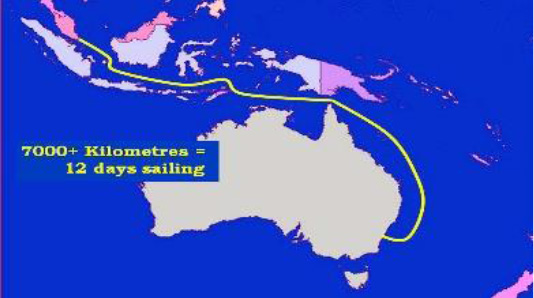Initially, church services were held in the Spar Shed dining room, but with increasing people living on the island, there was a need for larger premises. A New Chapel was established in a portion of the little used Sail Loft in the Rigging House. This came into use in 1902, able to cater for 400 people.

At the other end of the Rigging House, a Detention Centre was completed in 1905, able to handle 20 defaulters. As Church Parade was compulsory at that time, special arrangements were made to accommodate the defaulters at Sunday services. A special gallery was built along the dividing wall of the Chapel keeping them separate from the other attendees. Full details of this beautiful Chapel can be seen in the Society’s Heritage Tour DVD – see the shop for details.

A signal Station was erected in 1902 on the northern hill when daytime signalling was by Semaphore, replaced at night by a masthead light. The station was then expanded in 1910 to handle wireless transmissions from a 71metre high mast. A third, larger station was added in 1923, and a weather station added in 1931. That building is still there today and the mast is now outside the Australian National Maritime Museum.

1901 – 1913
Federation saw the colonial navies of South Australia, Victoria, NSW and Queensland amalgamated into the Commonwealth Navy. Following Royal Assent in 1911, the Commonwealth Navy became the Royal Australian Navy. The Royal Navy still continued to operate from Garden Island until 1913, when the first ships of the RAN arrived in Sydney

The Fleet consisted of the flagship HMAS Australia, accompanied by three cruisers, Melbourne, Sydney and Encounter, plus three torpedo boat destroyers, Parramatta, Warrego and Yarra. The Royal Navy control of the Garden Island facilities then transferred the RAN and Garden island became the base for the RAN, the role it still has today.

WORLD WAR 1
Garden Island was very busy throughout World War 1, fitting out and arming around 80 troopships and transports. Service facilities were also provided for some 850 visits from ships from the Royal Australian Navy, the Royal Navy and those from France and Japan. The Naval Depot worked in conjunction with facilities available an Cockatoo Island.

The years between World war 1 and 2 saw reductions in both ships and manpower, but as war clouds began to again arise, new ships were added and Garden Island’s facilities were reviewed for increased support services. One major problem was that of docking and handling gun turrets on big warships. When such facilities were needed, a 12-day voyage was required to visit the larger dock in Singapore.
 So the decision was taken to build a new Australian Graving Dock capable of handling the biggest vessels of the time – two Cunard liners, Queen Mary and Queen Elizabeth and the King George V Class Battleships. After viewing some 37 sites around Australia, the decision was taken in 1939 were considered, finally narrowed down to build a massive new dock east of the Harbour Bridge, by reclaiming part of the harbour between Garden Island and Potts Point.
So the decision was taken to build a new Australian Graving Dock capable of handling the biggest vessels of the time – two Cunard liners, Queen Mary and Queen Elizabeth and the King George V Class Battleships. After viewing some 37 sites around Australia, the decision was taken in 1939 were considered, finally narrowed down to build a massive new dock east of the Harbour Bridge, by reclaiming part of the harbour between Garden Island and Potts Point.



